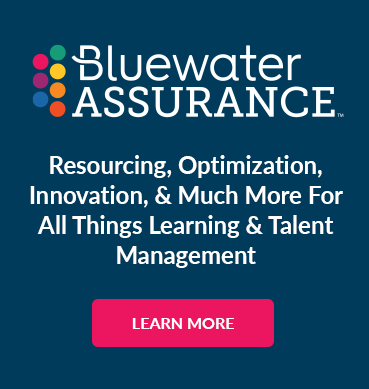Addressing Skills Gaps at Your Workplace
by Chris Bond | January 4, 2021 08:00 PM | The Future of Talent Management, The Future of Learning

No matter what industry you are in, the definition of “skills gap” is the same: the space between what employees can do and what their employers need them to do. According to a report by the National Association of Manufacturers, more than 25% of manufacturers had to turn down business opportunities due to a lack of workers.
Changes in the landscape of work continue to create gaps in the skillsets of the workforce. COVID may be to blame for much of it in 2020, but technology spirals up in rapid growth, quarter by quarter and year over year. To stay ahead of all of the changes, it is becoming important to ask yourself a few key questions:
- What skills and capabilities need to be front and center, and how do they impact employees?
- Do I need to develop a process for a skills gap analysis?
- How do I create a skills gap plan?
The Cost of Doing Nothing
If you aren’t analyzing the skills you need, it means the best possible training isn’t in place. You are missing out on critical talent development. Your best talent is at risk—of being put in the position to fail, or of being poached by companies who DO offer job training and skills development.
“Rather than indicating that the applicant is a feckless and inconsistent employee, a varied resume signals ambition, flexibility, and a more developed deck of skills that can be applied to numerous roles. But if your company doesn’t provide the upskilling and benefits that appeal to such applicants, essential jobs will remain vacant until the hiring managers decide they need to accept less qualified applications.” https://partners.pennfoster.edu/blog/2019/december/will-a-skills-gap-impact-your-industry-in-2020
Skills Demand vs. Skills Needs
Skills demands are the role’s requirements to do any particular job effectively. Skills needs are defined by the gaps in your workforce—do you have the right talent to fill the roles? Take a look at your needs and what you currently have available.
- Identify the need. Start at the top: what are the corporate goals? Everything anchors back to the business drivers.
- What’s working well?
- What isn’t working well at all?
It may be time for a root cause analysis. Write out your 5 Whys: Why aren’t things working and address the issues to help find the ideal skill sets needed for the roles you have now.
Identify the Lack
Is your workforce trained to handle changes due to technological advances, changes to purchasing decisions (products over services, for example, during the COVID crisis), or other reasons? Lack of tech training tends to fuel the skills gap overall but find out what exactly is causing the gap.
Use Technology to Evaluate the Gaps
With escalating changes to how information is gathered, shared, and contextually disseminated, you may want to examine how your workforce absorbs knowledge. Are they readers or video-watchers? Do they have any interest in online training or do they prefer classroom/in-person instruction? Do they listen to podcasts? Create a plan for plugging into your teams to find out how they learn best. An informal weekly or biweekly conversation should become part of a continuous process to help address the gaps. Are learned experiences from past jobs, volunteerism, civic duty, and even hobbies transferable skills for your workforce? Connect those experiences to new skills.
Bluewater has skills gap libraries to help provide goals, insight, and trackable benchmarks with content integration to map skills to content.
Create the Plan
Leverage technology to your advantage. Using what’s already available to you can be a game-changer. Does your catalog have the content to develop the skills needed to fill the skills gap right now, or is it something you need to create?
It will take a solid plan of action to deliver buy-in from leadership, but it’s the most critical to successfully ramping up into onboarding new skills. Once you have that, it’s time to get to work.
Interested in learning more about Learning & Talent Technology?
Feel free to reach out to us directly!
Search Our Blogs
Categories
- Ad Hoc (1)
- ADMIN (1)
- administration (1)
- AI (2)
- analytics (2)
- anxiety (1)
- Artificial intelligence (2)
- automation (1)
- BI (1)
- blog (1)
- Blueprint (1)
- center of excellence (10)
- Communication (2)
- COVID-19 (2)
- Culture (1)
- Custom Content (1)
- customer service (1)
- Data (1)
- Employee Engagement (1)
- Shark Bites - Cornerstone Edition (12)
- Shark Bites - SumTotal Edition (4)
- Shark Bites - Ultimate Edition (5)
- The Future of Learning (16)
- The Future of Talent Management (30)
- User Experience (2)
- UX (2)
- wellbeing (1)
Recent Posts
- Selecting Learning & Talent Technology - Part 5: Evaluating Vendors and Solutions
- Selecting Learning & Talent Technology - Part 4: Defining Technology Requirements
- Selecting Learning & Talent Technology - Part 3: Assessing and Aligning Talent Needs
- Selecting Learning & Talent Technology - Part 2: Understanding Business Drivers
- Selecting Learning & Talent Technology: A Strategic Approach to Success


